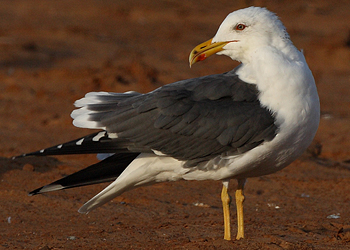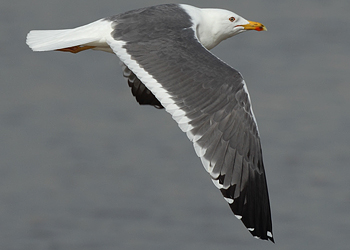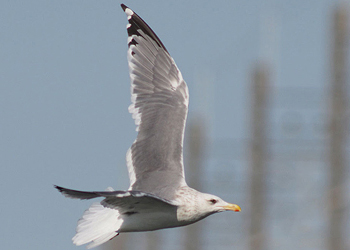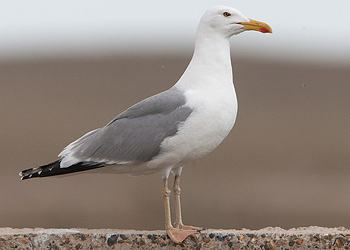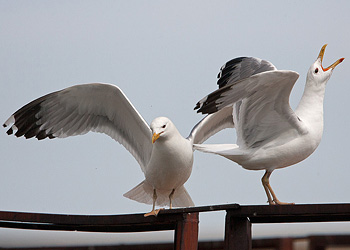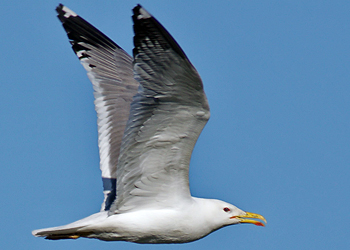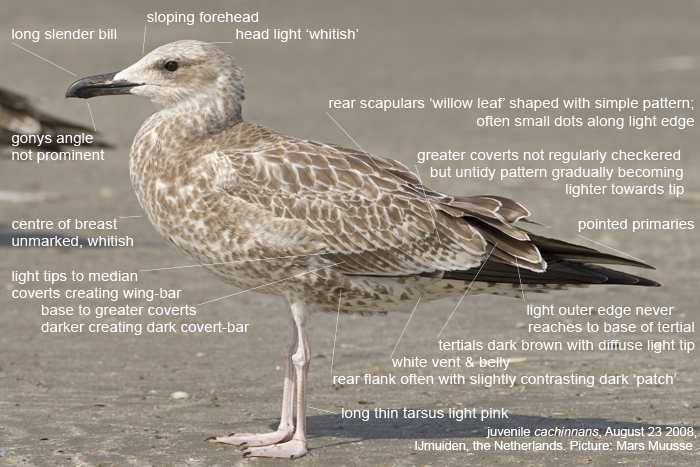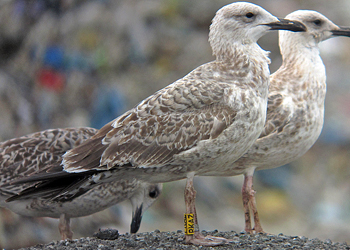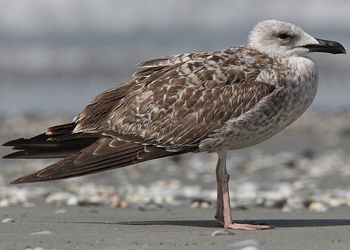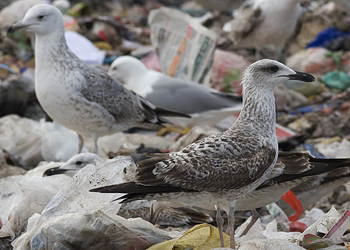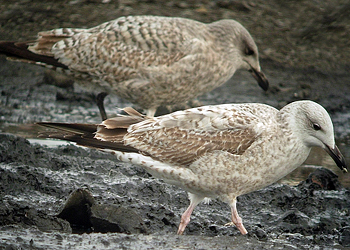 Herring Gull- Zilvermeeuw (argentatus & argenteus)
Herring Gull- Zilvermeeuw (argentatus & argenteus)
(last update: December 15, 2011
Herring Gull - 4cy /sub-adults March
Yellow-legged gulls and yellow-legged Herring Gulls in the Baltic
LARS JONSSON - Alula 3/1998
 This is a copy of the article "Yellow-legged gulls and yellow-legged Herring Gulls in the Baltic", by Lars Jonsson and published in Alula 3, 1998. "I" in the text refer to the author Jonsson. We also reproduced some tables and figures from this article, but also added many, many more images from especially ringed birds to illustrate Lars's article. We did our best to be very precise, but if you find any errors, please let me know at marsmuusse at gmail dot com.
This is a copy of the article "Yellow-legged gulls and yellow-legged Herring Gulls in the Baltic", by Lars Jonsson and published in Alula 3, 1998. "I" in the text refer to the author Jonsson. We also reproduced some tables and figures from this article, but also added many, many more images from especially ringed birds to illustrate Lars's article. We did our best to be very precise, but if you find any errors, please let me know at marsmuusse at gmail dot com.
PART 1: Taxonomy & Nomenclature
PART 2: Field identification
below: PART 3: Caspian Gull
Yellow-legged gulls and yellow-legged Herring Gulls in the Baltic
LARS JONSSON - Alula 3/1998
Caspian Gull (Steppe Gull) L. cachinnans (Pallas 1811)
Cachinnans breeds on islands and in river deltas around the large lakes and their river systems and steppe lakes from the Black Sea and further east to easternmost Kazakhstan (Lake Saissan). There is a west to east cline as to the amount of black on the wingtip and likewise to a slight degree in darkness of the mantle: birds are darker and have more black on the wingtip in the east. This difference prompted Stegmann (l934) to separate ponticus of the Black Sea and western Caspian Sea from cachinnans of the eastern Caspian shores and further east. On ponticus P10 shows a full white tip and an extensive white tongue, while cachinnans has more of a grey tongue to P10 and the white mirror separated from the apical spot by a black band. The differences discriminate possibly 80-90 % of all birds from the Black Sea region from birds of eastern Kazakhstan respectively which should be sufficient for subspecific recognition. There is, however, very little or no difference in the mantle colour between birds from the Black Sea (ponticus) and birds from the eastern Caspian and Aral seas (cachinnans). They all vary between Kodak 5.0-6.5, with 6.0 as the most typical shade. The difference between ponticus and cachinnans is less significant than the difference between populations of argentatus from Norwegian Finnmark and those from Gotland. I prefer for the time being to include all birds from the Black Sea eastwards to Lake Saissan in cachinnans and use the term ponticus-types for birds with a full white tip to P10, or talk about eastern and western cachinnans. Most of the birds encountered in the Baltic area are best described as being ponticus-types. Should Caspian Gull L. cachinnans be separated as a species, it may be valid to subdivide it into two subspecies ponticus and cachinnans. Should barabensis be included in this species L. cachinnans, it may be better to rank two clearly defined subspecies, cachinnans and barabensis.
Description
Structure: A big gull, some males well matching and sometimes exceeding Baltic Herring Gulls in size. Based on field observations, cachinnans shows a marked average difference in size between males and females. Many females appear smallish (fig. 6), and at times it may be hard to accept that a large male and a small female belong to the same species. They usually show rather characteristic proportions which, once learned, are easy to recognise. The body is most often level at rest, but the stance appears high due to very long and slender legs. Quite often the body appears to be tipped backwards, giving the bird an upright stance.
The neck is long and the head usually proportionally smaller than in argentatus. The head is drawn out with a flat forehead and a very long and usually slender bill. At rest, however, the forehead is often raised, creating a marked knob. Viewed from the front, the head looks more squarish with a flat top, compared with the rounded head of argentatus. The bill is characteristically very parallel-sided, lacking an obvious gonydeal angle. Some males have a thicker bill, imparting a powerful look (these birds are also proportionally larger-headed), the bill still being parallel-sided but with a more marked angle at the gonys. In argentatus the gonys angle is usually rather prominent, creating more of a swollen tip effect. Seen from a distance, the bill-shape of cachinnans may resemble a pencil stump with a blunt point. Normally one will react to the bill being longer, more slender and more parallel-sided than on argentatus or michahellis. Females often appear round-headed and when combined with a dark iris can even be reminiscent of Common Gull L. canus.
The body often looks more slender and less angular, the outline of the back merging smoothly with the folded wing, usually without the tertial step often seen on argentatus. On many, especially larger individuals (males), the body seems almost boat-shaped. The wings are long and more slender than on argentatus and even the flight silhouette can at times be distinctive.
Plumage: The tone ofthe grey mantle exactly matches the variation found among argentatus in the Baltic. Some are as pale as British argenteus, others slightly darker, as White Sea argentatus. On the Kodak Grey Scale they fall between 5.5 and just above 6.0. The extremes will be as light as 5.0 and as dark as 6.5 matching dark argentatus. Cachinnans from the Black and Caspian Sea is however normally a shade paler than typical michahellis. The message is, you will never be able to pick out a cachinnans from a group of Baltic argentatus by the shade of the mantle alone. Once you have discovered a cachinnans you might find, if the light is right, that it tends to be more neutral, less bluish grey than argentatus. However, this difference is very slight and I have found it of little help in finding or identifying cachinnans among argentatus. With experience, however, a very smooth and silky quality to the mantle colour of cachinnans may become apparent.
The wingtip pattern is an important fieldmark. The black on the wingtip is always jet-black, sharply set of against the white or greyish white tongues on the innerwebs of the outer primaries. The whitish tongues are usually so extensive that they can be seen on the flying bird as whitish streaks cutting deep into the black tip, leaving only a comparative narrow, uninterrupted black band near the tip. The pattern of P10 is such on many cachinnans (not all, but possibly 50% of full adult ponticus-types) that the whitish tongue even reaches the shaft on the basal one-third of the exposed part of the feather, a pattern which is never seen on argentatus (see fig. 6 and plate C2). Although many individuals have these whitish stripes cutting into the black wingtip, it is also common that the white on the innerweb of P10 and P9 is not visible from above in normal flight. Also, keep in mind that on eastern birds the black is more extensive (see plate C2).
Cachinnans from the Black and Caspian Seas usually have black on six outer primaries. P5-P10 (78%, n=32). Some also have black on the outer web of P4 (16%) but only two had black on both webs of P4 (6%). Approximately 10% show only an incomplete band on P5 (or only a dark spot on the outer web), thus matching typical Baltic argentatus. Of the birds originating from the eastern part of the range at least 50% show some black on P4. Argentatus breeding in the eastern Baltic usually also have black on six primaries. There is an average difference between these two forms in the amount of black on P5. Argentatus usually has a narrower black band on P5; it can be a well defined black band, but it usually narrows considerably on the inner web or at the shaft. Often it tends to break into two, split by a white shaft. Fully adult cachinnans can show a similar pattern, but most of the adult-looking birds which I have observed on Gotland have shown a broad band of even width (ca. 10mm). Rarely however cachinnans may have only a dark spot on the outer web of P5.
Western cachinnans has a very long white tip to P10; about two-thirds lack any trace of dark marks separating the white mirror from the apical spot. This pattern on the tip is found on around 20-30% of Baltic argentatus but predominates in argentatus from northern Norway. Very often argentatus from the Baltic has a very small dark spot on either side of the white tip. In the field the impression is that around half of all birds have a basically whole white tip to P10. This is most likely age related, i.e. younger cachinnans more often show a black band near the tip of P10.
The eye usually appears dark in the field. Adults are often picked out in flocks of argentatus by means of just their dark iris. This is especially true from late August, when argentatus have gained streaks and shadows around the eye, highlighting the pale iris, The small dark eye of cachinnans is set against a mostly white head, as if pierced by a gunshot. In winter cachinnans sometimes shows a very small shadow in front of and around the eye, delineating the white eye-ring (especially on immatures), but never a dark mask as on argentatus. The head basically appears all white in the field at some distance, but the crown can have soft fine streaks while the lower neck usually has some dark streaks. On sub-adults and near-adults there is usually a neck-collar of well defined dark spots and streaks, sharply demarcated from the white head. It takes some experience to get a grasp of the difference in the head streaks between these two taxa. Many argentatus which arrive on Gotland in October can be surprisingly white-headed (fig. 8). See also michahellis.
About 75% of all adult cachinnans have an iris colour which appears medium dark in the field, although it is not actually entirely dark brown, but rather more often light in colour and speckled with dark sepia. The remainder has pale irises and these birds will of course be less obvious among argentatus. The bill and head shape will nevertheless mark them out. The orbital ring is usually orange to orange-red. Argentatus with dark eyes are very rare, and this may be a sign of immaturity. More than 50% of adult cachinnans in colonies in south-eastern Ukraine were reported to have yellowish pale iris (Liebers and Dierschke 1997). It is difficult to explain this discrepancy; maybe the average age of adult looking birds seen so far in the Baltic has been lower. In summer the bill is yellow with a red spot on the lower mandible, which can bleed over to the upper mandible (many in michahellis, never on argentatus). Many breeding birds have a faint to distinct black mark near the gonys, In autumn the bill characteristically becomes pale greenish-grey or greenish-yellow with a light yellow tip and the red gonydal spot is reduced and less bright (see plate F).
The legs of breeding adults are often yellow, mostly soft greyish-yellow and during the non-breeding season they are frequently also grey or pale greyish-pink. Only in a minority are they deep yellow. In autumn they are almost always paler than in argentatus and the undefinable light greyish hue is characteristic. This is in obvious contrast to michahellis which is almost always distinctly yellow. As mentioned above, some Baltic argentatus can have much brighter yellow tarsi and feet than typical cachinnans.
Juveniles In my opinion four out of five juvenile cachinnans are so distinctive that they can be as easily picked out from argentatus as juvenile fuscus or marinus. The more obscure individuals usually need more time and careful observation to discern and identify. The basic fieldmarks and some details are annotated in plate D.
There are fewer notches and intemal markings on the feathers in the juvenile plumage of cachinnans than in the corresponding plumage of argentatus. Cachinnans thus looks cleaner and appears striped rather than chequered. In late August the brown centres are rather bleached and warm chocolate-brown. Apart from the structure, the most eye-catching features are usually the pattern on the tertials and wing coverts, in addition to the pale head. The white-headed impression is partly gained by abrasion and most obvious in August-September; when the moult into winter plumage begins, the head can become slightly more streaked again. Juvenile argentatus often looks white-headed in October if the juvenile head-feathers have not yet been moulted. In late August- early September the combination of a pale head and a dark, long bill is rather distinctive. This contrast between a white forehead and a black bill is shared with michahellis, but cachinnans usually has a less jet-black bill than the former, and even shows a tendency to develop paler areas on the bill already at this age.
With experience, it is often possible to separate juvenile cachinnans from juvenile argentatus and michahellis on the combination of the pattern of the tertials and the greater coverts alone. The basal two-thirds of the tertials are dark and this shade grades more or less quickly into a usually broad pale tip, the pattern being similar to the tertial pattern of juvenile Common Gull. The greater coverts are usually distinctly darker towards the base and progressively paler towards the tip forming an impression of a rather pronounced wing-bar, especially obvious in flight. The pattern on the greater coverts has been rather odd on most individuals I have observed in the Baltic, best explained by a drawing and accompanying text (see plate D). On michahellis and paler variants of fuscus the darker bases of the greater coverts are usually confined to the outer half of the arm. Very pale juvenile cachinnans can seem to lack this feature when the wing is folded, but usually the characteristic appearance is revealed when they take flight. The median coverts also have a lighter tip often creating an additional, neat but diffuse wing-bar. It should be said that some michahellis can show a wing very similar to cachinnans. In flight the white unmarked tail-base/rump and the pale underwing of cachinnans is also characteristic, compared with argentatus. Juvenile cachinnans are on average much paler and less strongly patterned on the underwing than argentatus, michahellis and fuscus. There is however a small degree of overlap: some fuscus and michahellis can be as pale as a typical cachinnans, while a few cachinnans are rather well patterned on the underwing. The inner primaries are on average darker than on typical argentatus, while the pigment of the primaries and their coverts is generally stronger and less susceptible to rapid bleaching, It is not unusual to see cachinnans with a lighter window on the innermost primaries (usually P2 and P3).
There is a sharp contrast between a whitish or creamy rump and a dark tail-band. Compared with michahellis the tail-band is broader on average and the border between the dark distal and white basal portions of the tail feathers is more tightly banded/vermiculated. The belly is white and the legs long and pale pink. No single character is really foolproof but, used in combination, they will certainly identify all juveniles.
I hesitate to introduce further variation and detail into the description, since such elaboration can sometimes confuse more than it clarifies. The information given here is based primarily on individuals seen on Gotland and elsewhere in the Baltic. There is, however, a small degree of geographical variation throughout the breeding range. All of the juveniles which I have identified in the Baltic area have, with a certain amount of variation, matched the general type shown on plate D. In Moscow in September l997, I observed several individuals with a more complicated pattern (alongside birds of classic appearance), with more notching and darker centres to the individual feathers; these birds possibly originate from the Caspian Sea populations rather than from the Black Sea. Perhaps such individuals have remained unnoticed in the Baltic, but I tend to suspect slight geographical variation.
Subadults As with all other large gulls, the maturation and development of the adult plumage shows much individual variation. As a rule of thumb, the immature appearance is retained as long as the juvenile and second set of flight-feathers. In the summer of its third calendar year (3CY), when the third set of flight-feathers is acquired, the appearance is more of an adult with some immature features (dark patterned primary coverts, dark on the tail and the bill). As soon as pale grey feathers appear on cachinnans (from the second calendar year, 2CY), it cannot be taken for fuscus or heuglini. It can still resemble michahellis and argentatus. A summary of age characters follows below.
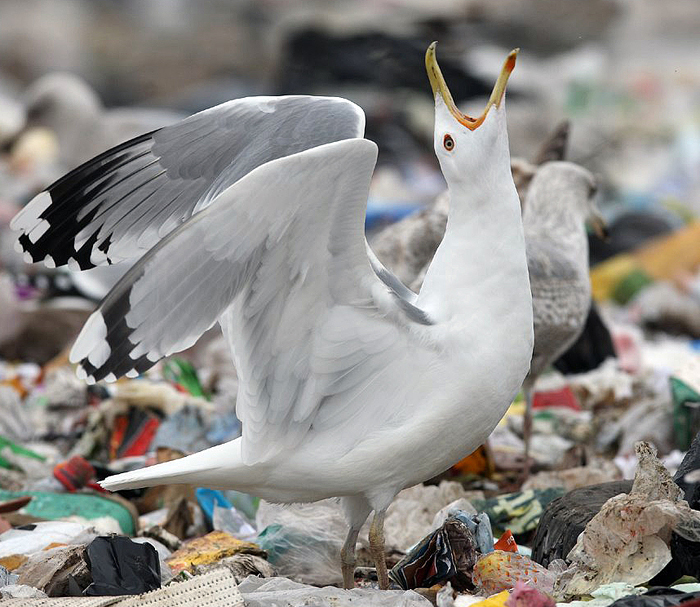
Caspian Gull cachinnans adult, April 11 2009, Riga, Latvia (Chris Gibbins). This large male was typically aggressive and, as pictured here, incessantly gave the rapid, laughing call which is diagnostic of Caspian Gull. Unlike Yellow-legged and Herring, Caspian Gulls hold their wings open when giving the long call – the so-called 'albatross posture'. The characteristic primary pattern is visible here: note the grey tongues eating into the black wing-tip on the upperside of P7–10 and the long silvery tongue on the underside of P10. Like Yellow-legged Gull, Caspian usually has a broad, black subterminal band extending unbroken across P5, but there is much individual variation and this bird has only isolated black marks on the outer and inner webs.
below: Several immature Herring Gulls in March.
 |
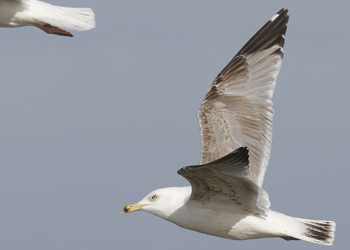 |
 |
|
 |
|
 |
|
 |
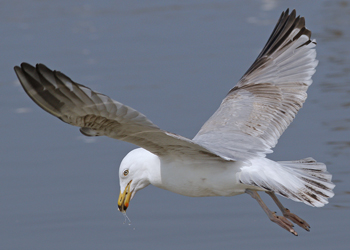 |
 |
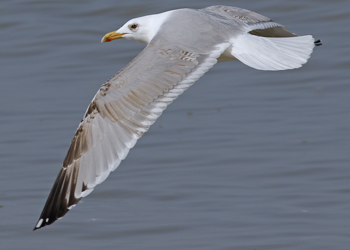 |
 |
 |
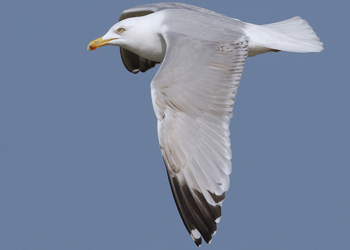 |
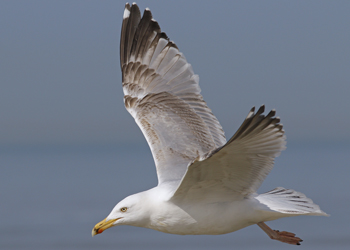 |
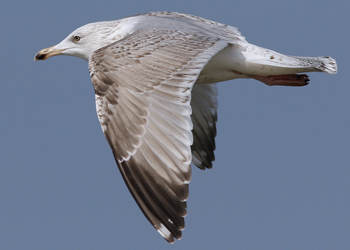 |
 |
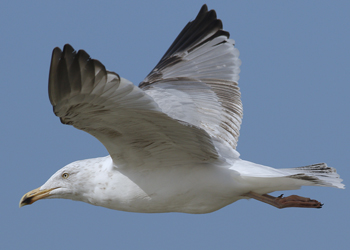 |
|
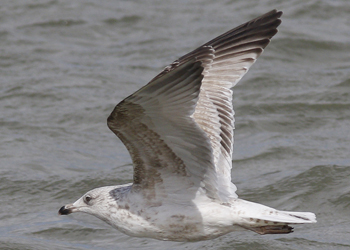 |
|
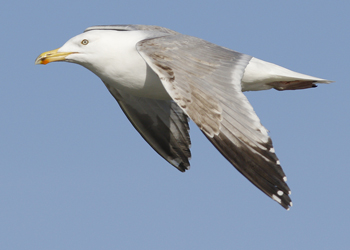 |
|
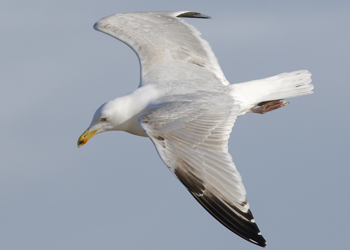 |
|
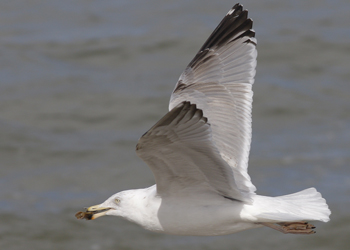 |
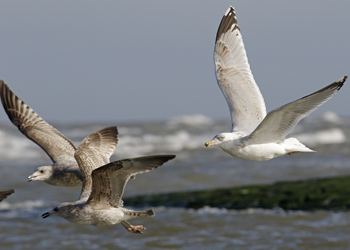 |
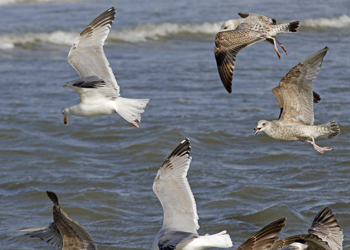 |
|
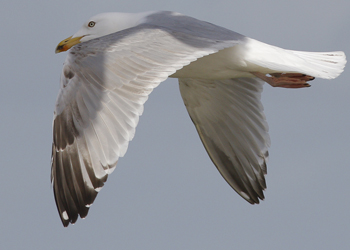 |
 |
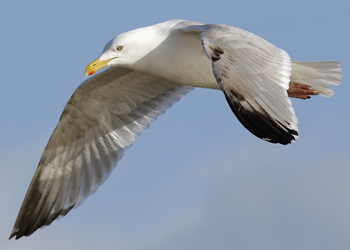 |
 |
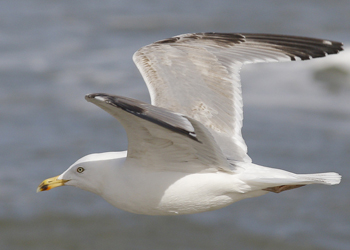 |
 |
 |
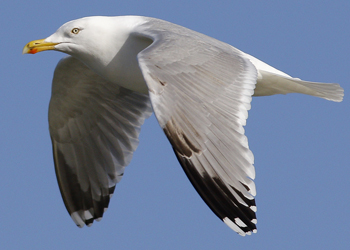 |
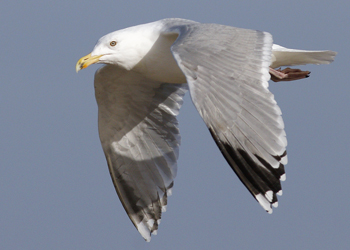 |
 Herring
Gull UR8.T sub-adult (argenteus), March 04 2011, IJmuiden, the Netherlands.
Herring
Gull UR8.T sub-adult (argenteus), March 04 2011, IJmuiden, the Netherlands.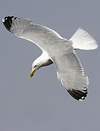 Herring Gull (argenteus) UA9.T March 24 2010 & May 27 2015, IJmuiden, the Netherlands.
Herring Gull (argenteus) UA9.T March 24 2010 & May 27 2015, IJmuiden, the Netherlands. Herring
Gull A3CV sub-adult (argenteus), March 08 2008, Boulogne/Mer, France. Pictures J-M Sauvage.
Herring
Gull A3CV sub-adult (argenteus), March 08 2008, Boulogne/Mer, France. Pictures J-M Sauvage. Herring
Gull
(argenteus) 4CY-5CY BTO GR-53691 March-July 2013 & September 2014, Calais, NW France. Picture: Jean-Michel Sauvage.
Herring
Gull
(argenteus) 4CY-5CY BTO GR-53691 March-July 2013 & September 2014, Calais, NW France. Picture: Jean-Michel Sauvage. Herring Gull (argenteus) A||9 4CY, March 01 2019, Katwijk, the Netherlands.
Herring Gull (argenteus) A||9 4CY, March 01 2019, Katwijk, the Netherlands.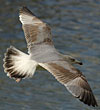 Herring Gull argenteus M8 4CY, February-March 2015, Rotterdam Zuid, the Netherlands. Picture: Merijn Loeve.
Herring Gull argenteus M8 4CY, February-March 2015, Rotterdam Zuid, the Netherlands. Picture: Merijn Loeve.  Herring
Gull E183 sub-adult (argenteus), March 06 2010, Wassenaar, the Netherlands. Picture Bart Vastenhouw.
Herring
Gull E183 sub-adult (argenteus), March 06 2010, Wassenaar, the Netherlands. Picture Bart Vastenhouw. Herring
Gull 5.366.547 5cy (argenteus), March 29 2004, Westkapelle, the
Netherlands (51.33N 03.25E). Picture Pim Wolf.
Herring
Gull 5.366.547 5cy (argenteus), March 29 2004, Westkapelle, the
Netherlands (51.33N 03.25E). Picture Pim Wolf. Herring
Gull NLA.5.419.235 5cy (argenteus), March 27 2010, Leiden, the Netherlands. Picture: Maarten van Kleinwee.
Herring
Gull NLA.5.419.235 5cy (argenteus), March 27 2010, Leiden, the Netherlands. Picture: Maarten van Kleinwee. Herring Gull x Caspian Gull hybrid X390 4CY, March 08 2019, Barneveld landfill, the Netherlands.
Herring Gull x Caspian Gull hybrid X390 4CY, March 08 2019, Barneveld landfill, the Netherlands. Herring Gull argentatus J4858 4CY, March 10 2015, Vest-Agder, Norway. Picture: Nils Helge Lorentzen.
Herring Gull argentatus J4858 4CY, March 10 2015, Vest-Agder, Norway. Picture: Nils Helge Lorentzen.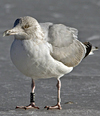 Herring Gull (argentatus) JU6A 4CY, March 04 2015, Hovindam - Oslo, Norway. Picture: John Sandøy.
Herring Gull (argentatus) JU6A 4CY, March 04 2015, Hovindam - Oslo, Norway. Picture: John Sandøy.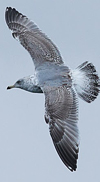 Herring Gull (argentatus) JN596 4CY, March 17 2014, Sandøya, Norway. Picture: Ingar Støyle Bringsvor.
Herring Gull (argentatus) JN596 4CY, March 17 2014, Sandøya, Norway. Picture: Ingar Støyle Bringsvor.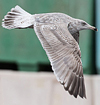 Herring Gull (argentatus) JN717 4CY, March 15 2014, Sandøya, Norway. Picture: Ingar Støyle Bringsvor.
Herring Gull (argentatus) JN717 4CY, March 15 2014, Sandøya, Norway. Picture: Ingar Støyle Bringsvor.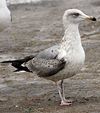 Herring Gull
(argentatus) NOS 4230528 4CY, March 06 2012, Oslo, Norway. Picture: Sindre Molværsmyr.
Herring Gull
(argentatus) NOS 4230528 4CY, March 06 2012, Oslo, Norway. Picture: Sindre Molværsmyr. Herring Gull argentatus RUM ES 023507 4CY, March & October 2017, Katwijk & Maasvlakte, the Netherlands. Picture: Merijn Loeve & Mars Muusse.
Herring Gull argentatus RUM ES 023507 4CY, March & October 2017, Katwijk & Maasvlakte, the Netherlands. Picture: Merijn Loeve & Mars Muusse. Herring Gull sub-adult, March 06 2017, Katwijk, the Netherlands.
Herring Gull sub-adult, March 06 2017, Katwijk, the Netherlands. Herring Gull 4CY, March 06 2017, Katwijk, the Netherlands.
Herring Gull 4CY, March 06 2017, Katwijk, the Netherlands. Herring Gull 4CY, March 06 2017, Katwijk, the Netherlands.
Herring Gull 4CY, March 06 2017, Katwijk, the Netherlands. Herring Gull sub-adult, March 30 2016, Katwijk, the Netherlands.
Herring Gull sub-adult, March 30 2016, Katwijk, the Netherlands. 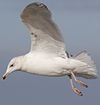 Herring Gull argentatus sub-adult, March 02 2017, Katwijk, the Netherlands.
Herring Gull argentatus sub-adult, March 02 2017, Katwijk, the Netherlands. Herring Gull 4CY, March 02 2017, Katwijk, the Netherlands.
Herring Gull 4CY, March 02 2017, Katwijk, the Netherlands. Herring Gull 4CY, March 02 2017, Katwijk, the Netherlands.
Herring Gull 4CY, March 02 2017, Katwijk, the Netherlands. Herring Gull (argentatus) 4CY, March 01 2014, Katwijk, the Netherlands.
Herring Gull (argentatus) 4CY, March 01 2014, Katwijk, the Netherlands.  Herring Gull (argentatus) 4CY, March 01 2014, Katwijk, the Netherlands.
Herring Gull (argentatus) 4CY, March 01 2014, Katwijk, the Netherlands. 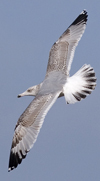 Herring Gull (argentatus) 4CY, March 01 2014, Katwijk, the Netherlands.
Herring Gull (argentatus) 4CY, March 01 2014, Katwijk, the Netherlands. 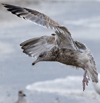 Herring Gull (argentatus) 4CY, March 01 2014, Katwijk, the Netherlands.
Herring Gull (argentatus) 4CY, March 01 2014, Katwijk, the Netherlands. 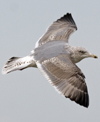 Herring Gull (argentatus) 4CY, March 01 2014, Katwijk, the Netherlands.
Herring Gull (argentatus) 4CY, March 01 2014, Katwijk, the Netherlands.  Herring Gull (argentatus) 4CY, March 05 2014, Katwijk, the Netherlands.
Herring Gull (argentatus) 4CY, March 05 2014, Katwijk, the Netherlands.  Herring Gull (argentatus) 4CY, March 01 2014, Katwijk, the Netherlands.
Herring Gull (argentatus) 4CY, March 01 2014, Katwijk, the Netherlands. 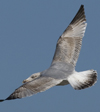 Herring Gull 4CY, March 05 2014, Katwijk, the Netherlands.
Herring Gull 4CY, March 05 2014, Katwijk, the Netherlands.  Herring Gull 4CY, March 05 2014, Katwijk, the Netherlands.
Herring Gull 4CY, March 05 2014, Katwijk, the Netherlands.  Herring Gull 4CY, March 05 2014, Katwijk, the Netherlands.
Herring Gull 4CY, March 05 2014, Katwijk, the Netherlands.  Herring Gull 4CY, March 05 2014, Katwijk, the Netherlands.
Herring Gull 4CY, March 05 2014, Katwijk, the Netherlands. 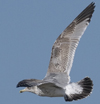 Herring Gull 4CY, March 13 2013, Noordwijk, the Netherlands.
Herring Gull 4CY, March 13 2013, Noordwijk, the Netherlands. Herring Gull 4CY, March 01 2014, Katwijk, the Netherlands.
Herring Gull 4CY, March 01 2014, Katwijk, the Netherlands.  Herring Gull 4CY, March 21 2013, Noordwijk, the Netherlands.
Herring Gull 4CY, March 21 2013, Noordwijk, the Netherlands. Herring Gull 4CY, March 13 2013, Noordwijk, the Netherlands.
Herring Gull 4CY, March 13 2013, Noordwijk, the Netherlands.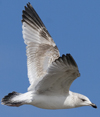 Herring Gull 4CY, March 21 2013, Noordwijk, the Netherlands.
Herring Gull 4CY, March 21 2013, Noordwijk, the Netherlands.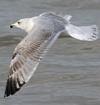 Herring Gull 4CY, March 01 2014, Katwijk, the Netherlands.
Herring Gull 4CY, March 01 2014, Katwijk, the Netherlands.  Herring Gull 4CY, March 01 2014, Katwijk, the Netherlands.
Herring Gull 4CY, March 01 2014, Katwijk, the Netherlands. 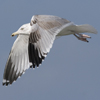 Herring Gull 4CY, March 01 2014, Katwijk, the Netherlands.
Herring Gull 4CY, March 01 2014, Katwijk, the Netherlands.  Herring Gull 4CY, March 01 2014, Katwijk, the Netherlands.
Herring Gull 4CY, March 01 2014, Katwijk, the Netherlands. 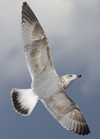 Herring Gull 4CY, March 21 2013, Noordwijk, the Netherlands.
Herring Gull 4CY, March 21 2013, Noordwijk, the Netherlands. Herring Gull 4CY, March 01 2014, Katwijk, the Netherlands.
Herring Gull 4CY, March 01 2014, Katwijk, the Netherlands.  Herring Gull 4CY, March 21 2013, Noordwijk, the Netherlands.
Herring Gull 4CY, March 21 2013, Noordwijk, the Netherlands. Herring Gull 4CY, March 01 2014, Katwijk, the Netherlands.
Herring Gull 4CY, March 01 2014, Katwijk, the Netherlands. 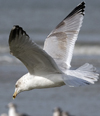 Herring Gull 4CY, March 01 2014, Katwijk, the Netherlands.
Herring Gull 4CY, March 01 2014, Katwijk, the Netherlands. 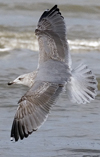 Herring Gull 4CY, March 01 2014, Katwijk, the Netherlands.
Herring Gull 4CY, March 01 2014, Katwijk, the Netherlands. 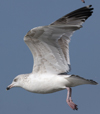 Herring Gull 4CY, March 01 2014, Katwijk, the Netherlands.
Herring Gull 4CY, March 01 2014, Katwijk, the Netherlands. 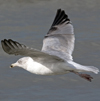 Herring Gull 4CY, March 01 2014, Katwijk, the Netherlands.
Herring Gull 4CY, March 01 2014, Katwijk, the Netherlands.  Herring Gull sub-adult, March 17 2015, IJmuiden, the Netherlands.
Herring Gull sub-adult, March 17 2015, IJmuiden, the Netherlands. 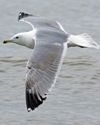 Herring Gull 4CY, March 01 2014, Katwijk, the Netherlands.
Herring Gull 4CY, March 01 2014, Katwijk, the Netherlands.  Herring Gull 4CY, March 13 2013, Noordwijk, the Netherlands.
Herring Gull 4CY, March 13 2013, Noordwijk, the Netherlands.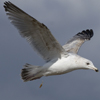 Herring Gull 4CY, March 21 2013, Noordwijk, the Netherlands.
Herring Gull 4CY, March 21 2013, Noordwijk, the Netherlands. Herring Gull 4CY, March 01 2014, Katwijk, the Netherlands.
Herring Gull 4CY, March 01 2014, Katwijk, the Netherlands.  Herring Gull 4CY, March 01 2014, Katwijk, the Netherlands.
Herring Gull 4CY, March 01 2014, Katwijk, the Netherlands.  Herring Gull 4CY, March 13 2013, Noordwijk, the Netherlands.
Herring Gull 4CY, March 13 2013, Noordwijk, the Netherlands. Herring Gull 4CY, March 21 2013, Noordwijk, the Netherlands.
Herring Gull 4CY, March 21 2013, Noordwijk, the Netherlands. Herring Gull 4CY, March 01 2014, Katwijk, the Netherlands.
Herring Gull 4CY, March 01 2014, Katwijk, the Netherlands.  Herring Gull 4CY, March 01 2014, Katwijk, the Netherlands.
Herring Gull 4CY, March 01 2014, Katwijk, the Netherlands.  Herring
Gull 4cy (argenteus), March 28
2011, IJmuiden, the Netherlands.
Herring
Gull 4cy (argenteus), March 28
2011, IJmuiden, the Netherlands. Herring
Gull 4cy (argenteus), March 16
2003, Boulogne/Mer, France (50.42N
01.34E).
Herring
Gull 4cy (argenteus), March 16
2003, Boulogne/Mer, France (50.42N
01.34E). Herring
Gull 4cy (argentatus), March 18
2003, Boulogne/Mer, France (50.42N
01.34E).
Herring
Gull 4cy (argentatus), March 18
2003, Boulogne/Mer, France (50.42N
01.34E). Herring
Gull 4cy (argentatus), March 18
2003, Boulogne/Mer, France (50.42N
01.34E).
Herring
Gull 4cy (argentatus), March 18
2003, Boulogne/Mer, France (50.42N
01.34E). Herring Gull 4cy (argentatus),
March 17 2003, Boulogne/Mer, France (50.42N
01.34E).
Herring Gull 4cy (argentatus),
March 17 2003, Boulogne/Mer, France (50.42N
01.34E). Herring Gull (argentatus) sub-adult, March 01 2014, Katwijk, the Netherlands. Thayeri pattern.
Herring Gull (argentatus) sub-adult, March 01 2014, Katwijk, the Netherlands. Thayeri pattern.  Herring Gull (argentatus) 5CY, March 05 2014, Katwijk, the Netherlands.
Herring Gull (argentatus) 5CY, March 05 2014, Katwijk, the Netherlands.  Herring Gull 5CY, March 10 2014, Katwijk, the Netherlands. No mirror on P10.
Herring Gull 5CY, March 10 2014, Katwijk, the Netherlands. No mirror on P10.  Herring Gull sub-adult, March 01 2014, Katwijk, the Netherlands. Isolated pale spot on underwing P9.
Herring Gull sub-adult, March 01 2014, Katwijk, the Netherlands. Isolated pale spot on underwing P9. 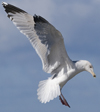 Herring Gull sub-adult, March 13 2013, Noordwijk, the Netherlands.
Herring Gull sub-adult, March 13 2013, Noordwijk, the Netherlands. Herring Gull (argentatus) sub-adult / 5CY, March 01 2014, Katwijk, the Netherlands.
Herring Gull (argentatus) sub-adult / 5CY, March 01 2014, Katwijk, the Netherlands.  Herring Gull (argentatus) sub-adult / 5CY, March 01 2014, Katwijk, the Netherlands.
Herring Gull (argentatus) sub-adult / 5CY, March 01 2014, Katwijk, the Netherlands. 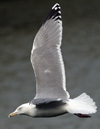 Herring
Gull near-adult / 5cy, March 09 2012, Scheveningen, the Netherlands.
Herring
Gull near-adult / 5cy, March 09 2012, Scheveningen, the Netherlands. Herring Gull sub-adult, March 13 2013, Noordwijk, the Netherlands.
Herring Gull sub-adult, March 13 2013, Noordwijk, the Netherlands. Herring Gull sub-adult, March 13 2013, Noordwijk, the Netherlands.
Herring Gull sub-adult, March 13 2013, Noordwijk, the Netherlands.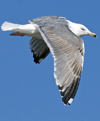 Herring Gull sub-adult, March 13 2013, Noordwijk, the Netherlands.
Herring Gull sub-adult, March 13 2013, Noordwijk, the Netherlands. Herring Gull sub-adult , March 01 2014, Katwijk, the Netherlands.
Herring Gull sub-adult , March 01 2014, Katwijk, the Netherlands.  Herring Gull sub-adult, March 13 2013, Noordwijk, the Netherlands.
Herring Gull sub-adult, March 13 2013, Noordwijk, the Netherlands. Herring Gull sub-adult, March 13 2013, Noordwijk, the Netherlands.
Herring Gull sub-adult, March 13 2013, Noordwijk, the Netherlands. Herring Gull 5CY, March 10 2014, Katwijk, the Netherlands.
Herring Gull 5CY, March 10 2014, Katwijk, the Netherlands.  Herring Gull 5CY, March 10 2014, Katwijk, the Netherlands.
Herring Gull 5CY, March 10 2014, Katwijk, the Netherlands. 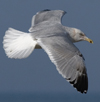 Herring Gull 5CY, March 05 2014, Katwijk, the Netherlands.
Herring Gull 5CY, March 05 2014, Katwijk, the Netherlands.  Herring Gull 5CY, March 05 2014, Katwijk, the Netherlands.
Herring Gull 5CY, March 05 2014, Katwijk, the Netherlands. 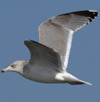 Herring Gull sub-adult, March 05 2014, Katwijk, the Netherlands.
Herring Gull sub-adult, March 05 2014, Katwijk, the Netherlands. 